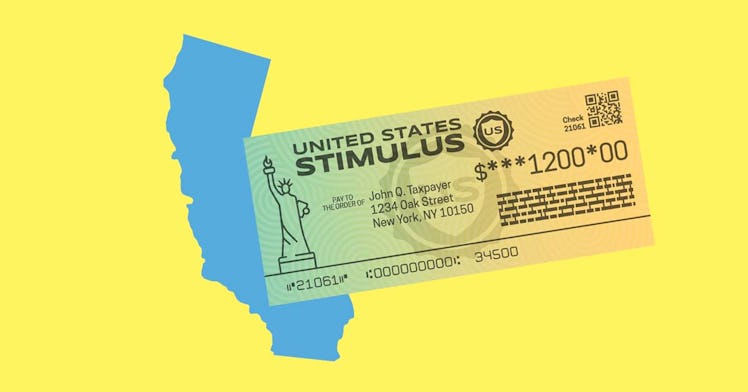California’s Stimulus Payments Are Going Out — Will Other States Get Some?
Will other states follow its lead?

California is poised to issue its own stimulus checks. Governor Gavin Newsom and legislative leaders struck a $9.6 billion deal to fund the Golden State Stimulus, a state-level round of stimulus checks. It’s the biggest round of state-level direct payments to those negatively impacted by COVID-19.
Here’s everything Californians (and non-Californians) need to know about the payments, which are both more and less generous than their federal progenitors.
Who is eligible for the Golden State Stimulus?
The 5.7 million California residents who are eligible for the one-time payments fall into two categories. There are CalEITC recipients, who qualify because their taxable income is $30,000 or less, and ITIN filers (those who lack a Social Security number) who made $75,000 or less.
While the income threshold is much lower than that used to calculate all of the federal stimulus payments, the inclusion of immigrants without Social Security numbers is something more progressive national Democrats were never able to get past the “ThEy aREn’T reAl aMeRIcAnS” crowd in the Senate. It will provide a much-needed cash infusion for a population that’s more likely to live with economic precarity.
How much is the Golden State Stimulus worth and when will it go out?
CalEITC recipients and EITN filers who made $75,000 or less will receive a $600 one-time payment. The exceptions are CalEITC recipients who file individually or jointly with an EITN and made $75,000 or less, who will receive a $1,200 one-time payment.
If the state has a filer’s direct deposit information, their payment will go out electronically within two weeks of the payment start date. Otherwise, it’s mailing paper checks, which will take four to six weeks. Those start dates are staggered based on tax return filing dates.
For those who filed between January 1 and March 1, payments began on April 15. For those who file between March 2 and April 23, payments will begin on May 1. And those who file later will receive their stimulus payment 45 days (with direct deposit) or 60 days (with a paper check) after their return is processed.
Will other states follow suit?
The District of Columbia provided $1,200 payments to residents receiving federal Pandemic Unemployment insurance. In Colorado, an executive order last October sent $375 payments to about 435,000 residents. And Maryland’s RELIEF Act sent payments of $500 and $300 to families and individuals who qualified for the earned income tax credit.
Whether or not more states will follow suit is unclear. States are at the disadvantage, compared to the federal government, of not being able to print money, which makes it more difficult to implement direct payments to people on a large scale without raising taxes.
And despite rising case numbers in much of the country, the steady increase of vaccinated Americans and gradual loosening of pandemic restrictions does seem to indicate that some kind of economic recovery is imminent. That could mean less of an incentive for state lawmakers to provide money to their constituents even if it’s sorely needed after more than a year of economic disruption.
This article was originally published on